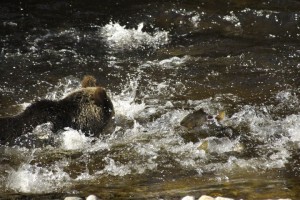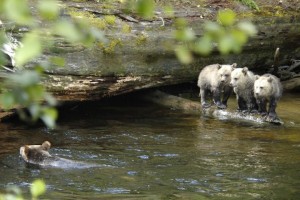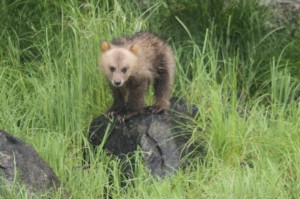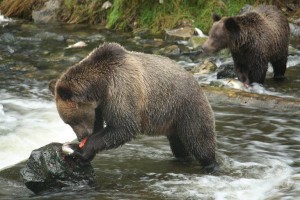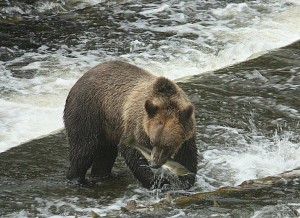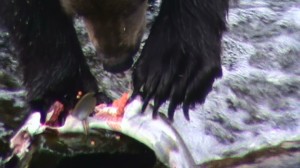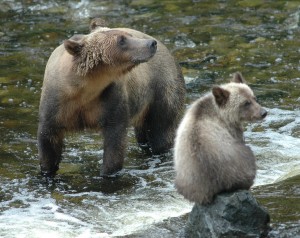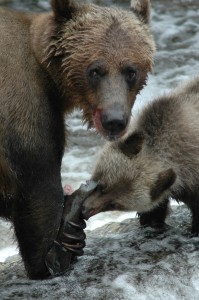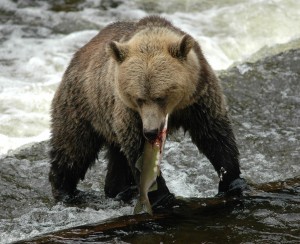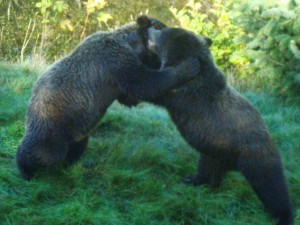
Not all encounters between grizzly bears are friendly but this one between siblings was playing. The wildlife tours from the lodge travel up Knight Inlet to view the grizzly bears along the shore in the spring and after August 24th we move up the river to the viewing platforms which overlook a man-made salmon spawning channel. Both along the beach and on the river we encounter juvenile bears testing their strength in play. The only true aggression is when a mother with cubs encounters a male bear or when one bear is defending its claim to a fishing area. But even these rarely end in injury as mothers are a “force of nature” normally left alone and the abundance of salmon in the area make the fishing spot not that important.
